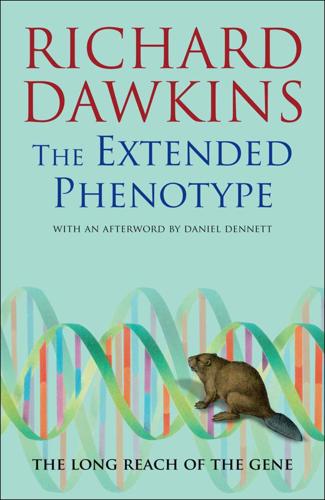
The Extended Phenotype: The Long Reach of the Gene
by
Richard Dawkins
Published 1 Jan 1982
It is like holding an abstract painting upside down; I do not say that the meaning of the picture will suddenly be clear, but some of the structure of the composition that was hidden may show itself’ (p. 1). I came across this after writing my own Necker Cube passage, and was delighted to find the same views expressed by so respected an author. The trouble with my Necker Cubes, and with Bonner’s abstract painting, is that, as analogies, they may be too timid and unambitious. The analogy of the Necker Cube expresses my minimum hope for this book. I am pretty confident that to look at life in terms of genetic replicators preserving themselves by means of their extended phenotypes is at least as satisfactory as to look at it in terms of selfish organisms maximizing their inclusive fitness.
…
We agree that there is something special about the individual organism as a level in the hierarchy of life, but it is not something obvious, to be accepted without question. My hope is that this book has revealed that there is a second side to the Necker Cube. But Necker Cubes have a habit of flipping back again to their original orientation, and then continuing to alternate. Whatever it is that is special about the individual organism as a unit of life, we should at least see it more clearly for having viewed the other side of the Necker Cube, for having trained our eyes to see through body walls into the world of replicators, and out and beyond to their extended phenotypes. So, what is it that is special about the individual organism?
…
Yet it is this hard-won fastness that I may seem to be abandoning here, abandoning almost before it is properly secured; and for what? For a flickering Necker Cube, a metaphysical chimera called the extended phenotype? No, to renounce those gains is far from my intention. The paradigm of the selfish organism is vastly preferable to what Hamilton (1977) has called ‘the old, departing paradigm of adaptation for the benefit of the species’. ‘Extended phenotype’ is misunderstood if it is taken to have any connection with adaptation at the level of the group. The selfish organism, and the selfish gene with its extended phenotype, are two views of the same Necker Cube. The reader will not experience the conceptual flip-over that I seek to assist unless he begins by looking at the right cube.

Machine Translation
by
Thierry Poibeau
Published 14 Sep 2017
Thanks to the communication context, the brain probably directly activates the “right” meaning, without even considering alternate solutions. A parallel has sometimes been proposed with the Necker cube, the representation of a cube seen in perspective with no depth cue (figure 1). Figure 1 The Necker cube, the famous optical illusion published by Louis Albert Necker in 1832. (Image licensed under CC BY-SA 3.0 via Wikimedia Commons. From https://commons.wikimedia.org/wiki/File:Necker_cube.svg.) The drawing is “ambiguous” in that no cue makes it possible to determine which side of the cube is in front and which side is at the back.
…
ISBN: 978-0-262-53421-5 eISBN 9780262342438 ePub Version 1.0 Table of Contents Series page Title page Copyright page Series Foreword Acknowledgments 1 Introduction 2 The Trouble with Translation 3 A Quick Overview of the Evolution of Machine Translation 4 Before the Advent of Computers… 5 The Beginnings of Machine Translation: The First Rule-Based Systems 6 The 1966 ALPAC Report and Its Consequences 7 Parallel Corpora and Sentence Alignment 8 Example-Based Machine Translation 9 Statistical Machine Translation and Word Alignment 10 Segment-Based Machine Translation 11 Challenges and Limitations of Statistical Machine Translation 12 Deep Learning Machine Translation 13 The Evaluation of Machine Translation Systems 14 The Machine Translation Industry: Between Professional and Mass-Market Applications 15 Conclusion: The Future of Machine Translation Glossary Bibliography and Further Reading Index About Author List of Tables Table 1 Example of possible translations in French for the English word “motion” List of Illustrations Figure 1 The Necker cube, the famous optical illusion published by Louis Albert Necker in 1832. (Image licensed under CC BY-SA 3.0 via Wikimedia Commons. From https://commons.wikimedia.org/wiki/File:Necker_cube.svg.) Figure 2 Vauquois’ triangle (image licensed under CC BY-SA 3.0, via WikiMedia Commons). Source: https://en.wikipedia.org/wiki/File:Direct_translation_and_transfer_translation_pyramind.svg. Figure 3 An extract from the Hansard corpus aligned at sentence level.
…
An analogy is often drawn with human perception: on the one hand, the brain analyzes groups of simple items very rapidly in order to identify higher-level characteristics, and on the other hand, it recognizes complex forms from characteristic features, and can even extrapolate a complex representation from partial information (this is essentially what happens in the case of the Necker cube, where the brain infers a three-dimensional representation from a two-dimensional drawing; see figure 1 in chapter 2). In the case of machine translation, deep learning makes it possible to envision systems where very few elements are specified manually, the idea being to let the system infer by itself the best representation from the data.
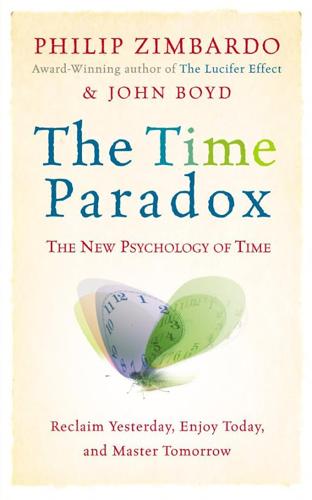
Time Paradox
by
Philip G. Zimbardo
and
John Boyd
Published 1 Jan 2008
One of the reasons why most of us think of ourselves as talented, friendly, wise, and fair-minded is that these words are the lexical equivalents of a Necker cube, and the human mind naturally exploits each word’s ambiguity for its own gratification. Disambiguating Experience Of course, the richest sources of exploitable ambiguity are not words, sentences, or shapes but the intricate, variegated, multidimensional experiences of which every human life is a collage. If a Necker cube has two possible interpretations and talent has fourteen possible interpretations, then leaving home or falling ill or getting a job with the U.S.
…
Or is there something wrong with us? WHEN I WAS TEN YEARS OLD, the most magical object in my house was a book on optical illusions. Its pages introduced me to the Müller-Lyer lines whose arrow-tipped ends made them appear as though they were different lengths even though a ruler showed them to be identical, the Necker cube that appeared to have an open side one moment and then an open top the next, the drawing of a chalice that suddenly became a pair of silhouetted faces before flickering back into a chalice again (see figure 1). I would sit on the floor in my father’s study and stare at that book for hours, mesmerized by the fact that these simple drawings could force my brain to believe things that it knew with utter certainty to be wrong.
…
But there is another factor of equal importance and greater interest. Like rats and pigeons, each of us has desires, wishes, and needs. We are not merely spectators of the world but investors in it, and we often prefer that an ambiguous stimulus mean one thing rather than another. Consider, for example, the drawing of a box in figure 18. This object (called the Necker cube after the Swiss crystallographer who discovered it in 1832) is inherently ambiguous, and you can prove this to yourself simply by staring at it for a few seconds. At first, the box appears to be sitting on its side and you have the sense that you’re looking out at a box that is across from you.

Wonderland: How Play Made the Modern World
by
Steven Johnson
Published 15 Nov 2016
Since Brewster’s time, entire books—some targeted at seven-year-olds, others at neuroscientists—have cataloged a vast menagerie of optical illusions. Consider the two famous visual tricks, the Kanizsa triangle and the Necker cube. Left: Kanizsa triangle; Right: Necker cube In each case, the eye detects something that is quite literally not there: a white triangle and a three-dimensional box. In each case, it is almost impossible to un-see the illusion. The Necker cube can be visually flipped between two different three-dimensional orientations, but most of us can’t perceive it as it actually is: twelve intersecting lines lying on a two-dimensional surface.
…
A number of automaton designers in the eighteenth century attempted to create a “speaking machine”—a robotic human head that could utter words and sentences through artificial means, following on the principles of Vaucanson’s automated flute player. But the human ear is not easily fooled by speech simulations: even today, with all of our computational power, a child can tell the difference between Siri and a human voice. And the other senses—touch, smell, taste—are even less prone to being tricked the way our eyes are tricked by the Necker cube. A handful of tactile illusions exist; with taste, the closest equivalent might well be the way chili peppers trick our brains into perceiving heat. But if you want to deceive the senses of another human being, your best bet is to do it through their eyes. There is something paradoxical about this vulnerability.
…
In a sense, the brain has evolved a series of cheats that enable it to detect things like edges or motion or three-dimensional relationships between objects, filling in missing information on the fly. You can think of these as the rules of thumb that govern our sense of sight. For instance, when our eyes perceive two lines coinciding in a flat image, our brain assumes those lines intersect in three-dimensional space. (The Necker cube relies on this rule to create the sense of depth in the image.) Millions of years of evolution created rules for interpreting visual information, helping the eye evaluate and predict the physical arrangement and motion of objects that it perceives. But through hundreds of years of cultural evolution, we began discovering unusual configurations that would confound those predictions, forcing the eye to see something that wasn’t, technically speaking, there.

What We Cannot Know: Explorations at the Edge of Knowledge
by
Marcus Du Sautoy
Published 18 May 2016
My favourite example of this change in consciousness is the brain’s reaction to a sketch of my casino dice. What do you see? At first it appears to be a cube with one square to the fore. But then, as you stare at it, suddenly the cube flips and it seems as if another square is to the fore. Called the Necker cube, the image hasn’t changed but what you are conscious of has. What has happened in the brain? Is consciousness really just a story that your brain tells about the sensory input it receives through the body’s interaction with the world? Another striking example of how the brain processes visual data in surprising ways was shown to me by neuroscientist Christof Koch.
…
According to Koch’s research, it appears that the retinal nerves are not sending different information, so the change in our conscious experience is happening further down the line in the brain. The trouble is that the fMRI and EEG scanners are too crude to pick up changes as subtle as the flip from one view of the Necker cube to the other. But in 2004 Koch, together with his team at Caltech, spotted an opportunity to ask an individual neuron questions about what stimulated it to fire, which led to the discovery of some curious neuronal activity. THE JENNIFER ANISTON NEURON Epileptic seizures can be caused by a miswiring or scar tissue that is responsible for triggering the synchronized firing of neurons across the brain, a bit like the chain reaction of an atomic bomb going off in the head.
…
In contrast to the man in the monkey suit, even when you know what is going on it is very difficult to make your brain hear ‘Ba’ as you watch the mouth make the sound of ‘Fa’. The brain is a pattern searcher and is trying to impose structure on the cacophony of information it is being bombarded with. When the information is ambiguous, as in the example of the Necker cube or the McGurk effect, the brain has to choose. These illusions are a warning to all of us trying to know things about our universe. We have no privileged access to reality. Our interaction with our environment is constructed from the information our brains receive, and we build a plausible representation of the external world.

The Eureka Factor
by
John Kounios
Published 14 Apr 2015
In fact, you can’t control them in the way you can control your deliberate, conscious thought. Insights are like cats. They can be coaxed but don’t usually come when called. The other key feature of insights is that they yield, often literally, a different way of looking at things. Consider the cube on the left side of figure 1.1. This is a Necker cube. The interesting thing about it is that its appearance is ambiguous. As you can see in the right side of the figure, either the lower square or the higher square of this transparent cube could be viewed as closer to you. With a shift of attention, you can see it in either of these two ways. But you can’t see it in both ways simultaneously because the two interpretations are incompatible: a single face of the cube can’t be both closer to you and farther from you at the same time.
…
But you can’t see it in both ways simultaneously because the two interpretations are incompatible: a single face of the cube can’t be both closer to you and farther from you at the same time. And when you shift your attention from one of these squares to the other, the change in your interpretation is abrupt. This kind of perspective shift is a prototype for insight. FIGURE 1.1: The Necker cube. Wikicommons (commons.wikimedia.org/wiki/File:Necker%27s_cube.svg) The Gestalt psychologists of the early twentieth century liked to point out that we can interpret almost any type of object, situation, or event in more than one way. That’s why people often use expressions such as “seeing things in a new light” or “seeing things from a different angle” to describe insights.
…
In fact, cognitive psychologists sometimes use the “brick test” as a way to measure creativity: The more frequently you can shift your perspective, the more uses you will be able to think of for a common object such as a brick, and thus the more creative you are considered to be. According to the Gestalt psychologists, when you get stuck while trying to solve a problem it’s often because you are thinking about the problem in the wrong way. Just as a simple visual scene such as a Necker cube can be radically reinterpreted in an instant, so can a complex problem be “restructured,” yielding an aha moment about the solution. An object that was previously used for one purpose can now be thought of as a tool to perform some other kind of task; a threat can now be regarded as an opportunity; a relationship with another person can be redefined from competitor to collaborator.

A Theory of the Drone
by
Gregoire Chamayou
Published 23 Apr 2013
They can feel the heft and slipperiness of the containers they manipulate with their metal fingers. They know perfectly well where they are and are not fooled into false beliefs by the experience, yet it is as if they were inside the isolation chamber they are peering into. With mental effort, they can manage to shift their point of view back and forth rather like making a transparent Necker cube or an Escher drawing change orientation before one’s eyes. It does seem extravagant to suppose that in performing this bit of mental gymnastics, they are transporting themselves back and forth.” Daniel Dennett, “Where Am I?” in Brainstorms: Philosophical Essays on Mind and Psychology (Hassocks, Sussex: Harvester, 1978), 315.
…
And yet it is “as if” he was in the place where the operations are unfolding. It is this “as if” feeling that needs to be clarified. It is an “as if” that is not like a belief, but neither is it an illusion. Dennett’s final analogy is a subtle one: the examples that he provides are very specific cases of paradoxical objects. When one concentrates on a Necker cube one can see it now from the front, now from the back, as its back surfaces become its front ones and vice versa, depending on whether one shifts them mentally to the front or to the back. What matters in this analogy with a tele-operator’s experience is not the idea of an interpretative indecidability so much as that of a variation of the objective configuration of the phenomenon as regards the mental focalizing of the subject.
…
It is a problem that dogs ergonomists who work on the design of interfaces and the psychologists who study the work of tele-operators and how to maintain focal attention for long hours at a time or, as they themselves put it, how to facilitate and maintain the tele-operators’ ” situational consciousness,” which is always fragile: it involves concentrating on one environment even as one is perceiving two; this is a matter of attention and of focusing mentally on one particular point of view. In the case of the Necker cube, you do not see both images at the same time. As soon as you see one, the other disappears. There is a strict alternative here: the one effaces the other. The shift in the point of view is total. But in the case of a tele-operator, although there is a shift between a focal consciousness and a subsidiary consciousness, the problem is that the one continues surreptitiously to feed off the other, for that provides the immediate framework within which the latter is held.

Richard Dawkins: How a Scientist Changed the Way We Think
by
Alan Grafen; Mark Ridley
Published 1 Jan 2006
Richard suggested that his move backwards and forwards between the language of gene intentions and the more orthodox language of genetic differences was acceptable because they are simply alternative ways of describing the same thing. To make his point, he described perception of the Necker Cube. The front edges of the line drawing of the cube suddenly flip to the back as we look at them. The lines representing the edges of a cube can be seen as though either the top corner of the cube is facing forwards or it is facing away. Each perceived image of the cube is as real as the other and Richard suggests that, in similar ways, the different pictures of the gene translate backwards and forwards into the other. Both perceptions are equally valid. At first the Necker Cube analogy seems appealing, but it is not exact because the bodies of thought and evidence on which perceptions are based are different for the two ways in which Richard uses ‘gene’.
…
Nor was I making the vacuous statement that development is complicated. The central point of that passage in my review of The Selfish Gene was to do with the kind of slippage that can occur when language is used loosely. I suspect that Richard believes that he has never been guilty of such slippage for he used the simile of the Necker Cube to refer to the ways it might be possible to move from one type of discourse to another. However, even as clear a thinker as Richard sometimes marches into a linguistic quagmire that causes so much confusion in the minds of others. Richard is aware that he uses ‘gene’ in distinctly different ways.
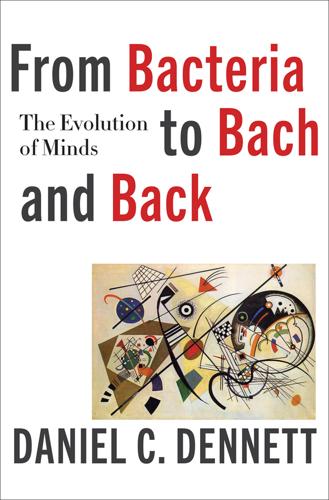
From Bacteria to Bach and Back: The Evolution of Minds
by
Daniel C. Dennett
Published 7 Feb 2017
Hume’s strange inversion of reasoning A red stripe as an intentional object What is Cartesian gravity and why does it persist? 15.The Age of Post-Intelligent Design What are the limits of our comprehension? “Look Ma, no hands!” The structure of an intelligent agent What will happen to us? Home at last Appendix: The Background References Index LIST OF ILLUSTRATIONS Figure 1.1: Duck-rabbit Figure 1.2: Necker cube Figure 3.1: Kessler and Werner, stone circles Figure 3.2: Kessler and Werner’s stone-sorting algorithm at work Figure 4.1: Elevator operator manual page Figure 5.1: Clam rake Figure 7.1: Darwinian space Figure 7.2: Darwinian space with other dimensions Figure 7.3: Darwinian space for origin of life Figure 7.4: Darwinian space with religions Figure 7.5: Inverted Darwinian space with Darwinian phenomena at (0,0,0) and intelligent design at (1,1,1) Figure 9.2: Glossogenetic tree of all languages Figure 9.3: Selfridge’s automatic CAT Figure 13.1: Darwinian space Figure 13.2: Darwinian space of cultural evolution with intermediate phenomena Color insert following page 238 Figure 3.3: Australian termite castle Figure 3.4: Gaudí, La Sagrada Familia Figure 9.1: The Great Tree of Life Figure 12.1: Claidière et al., random patterns evolve into memorable tetrominos Figure 14.1: Complementary color afterimage PREFACE I started trying to think seriously about the evolution of the human mind when I was a graduate student in philosophy in Oxford in 1963 and knew almost nothing about either evolution or the human mind.
…
(Strange inversions will be a major theme in this book.) There seem to be two competing orientations, the first-person point of view of the Defenders and the third-person point of view of the scientists, much like the two ways of seeing the philosophers’ favorite illusions, the duck-rabbit and the Necker cube. You can’t adopt both orientations at once. The problem posed by Cartesian gravity is sometimes called the Explanatory Gap (Levine 1983) but the discussions under that name strike me as largely fruitless because the participants tend to see it as a chasm, not a glitch in their imaginations. They may have discovered the “gap,” but they don’t see it for what it actually is because they haven’t asked “how it got that way.”
…
The idea of Cartesian gravity, as so far presented, is just a metaphor, but the phenomenon I am calling by this metaphorical name is perfectly real, a disruptive force that bedevils (and sometimes aids) our imaginations, and unlike the gravity of physics, it is itself an evolved phenomenon. In order to understand it, we need to ask how and why it arose on planet Earth. FIGURE 1.2: Necker cube. It will take several passes over the same history, with different details highlighted each time, to answer this question. We tend to underestimate the strength of the forces that distort our imaginations, especially when confronted by irreconcilable insights that are “undeniable.” It is not that we can’t deny them; it is that we won’t deny them, won’t even try to deny them.
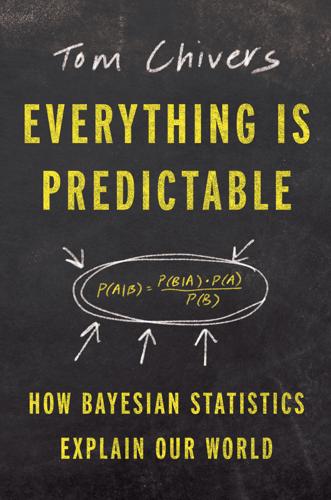
Everything Is Predictable: How Bayesian Statistics Explain Our World
by
Tom Chivers
Published 6 May 2024
He demonstrated that when two hypotheses explain the evidence equally well, the brain can flip between those hypotheses. The “Necker cube” is the most famous example: if you’re like me, you should be able to “choose” to see it as either viewed from above and to the right, or below and to the left. This is, you can probably see, a Bayesian model. Your hypotheses are priors. You seek new evidence from your senses to confirm or disconfirm them—that’s your likelihood, your data. And you combine them to get a posterior probability distribution. In the case of the Necker cube, you have no strong reason to prefer either of your two hypotheses (the cube viewed from below or the cube viewed from above), so your prior probability is split fifty-fifty between the two, and your data fits equally well with both.
…
But that information was compatible with (at least) two plausible hypotheses: a dark blue and black dress under bright, yellowish lighting, or a white and gold dress under dimmer, blue-tinted lighting. What’s interesting about The Dress is that most people are unable to pop back and forth between those two hypotheses, as with the Necker cube, and once the “real” color of the dress was revealed, it didn’t then snap into place as with the picture of the cow. (The dress was actually blue and black: the woman wearing it shared another picture.) One possibility is that people start with different priors: one paper suggested that “morning people” might have a prior that the light would be bluer.
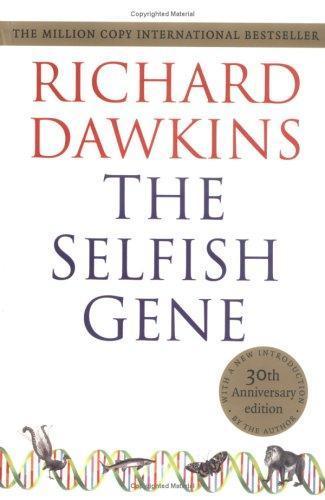
The Selfish Gene
by
Richard Dawkins
Published 1 Jan 1976
Rather than propose a new theory or unearth a new fact, often the most important contribution a scientist can make is to discover a new way of seeing old theories or facts. The Necker cube model is misleading because it suggests that the two ways of seeing are equally good. To be sure, the metaphor gets it partly right: 'angles', unlike theories, cannot be judged by experiment; we cannot resort to our familiar criteria of verification and falsification. But a change of vision can, at its best, achieve something loftier than a theory. It can usher in a whole climate of thinking, in which many exciting and testable theories are born, and unimagined facts laid bare. The Necker cube metaphor misses this completely. It captures the idea of a flip in vision, but fails to do justice to its value.
…
It is in fact a logical outgrowth of orthodox neo-Darwinism, but expressed as a novel image. Rather than focus on the individual organism, it takes a gene's-eye view of nature. It is a different way of seeing, not a different theory. In the opening pages of The Extended Phenotype, I explained this using the metaphor of the Necker cube. This is a two-dimensional pattern of ink on paper, but it is perceived as a transparent, three-dimensional cube. Stare at it for a few seconds and it will change to face in a different direction. Carry on staring and it will flip back to the original cube. Both cubes are equally compatible with the two-dimensional data on the retina, so the brain happily alternates between them.

How the Mind Works
by
Steven Pinker
Published 1 Jan 1997
A good metaphor is a soap bubble that wobbles in eggy and amoeboid shapes as the tugs among its neighboring molecules pull it into a sphere. Sometimes a constraint network can have mutually inconsistent but equally stable states. That captures the phenomenon of global ambiguity, in which an entire object, not just its parts, can be interpreted in two ways. If you stare at the drawing of a cube on page 107 (called a Necker cube), your perception will flip from a downward view of its top face to an upward view of its bottom face. When the global flip occurs, the interpretations of all of the local parts are dragged with it. Every near edge becomes a far edge, every convex corner becomes a concave corner, and so on. Or vice versa: if you try to see a convex corner as concave, you can sometimes nudge the whole cube into flipping.
…
What the assumption rules out is a world made up of dust storms, swarms of gnats, fine wires, deep crevasses between craggy peaks, beds of nails viewed point-on, and so on. The assumptions sound reasonable in the abstract, but something still has to find the matches that satisfy them. Chicken-and-egg problems can sometimes be solved with the technique called constraint satisfaction that we met in Chapter 2 when looking at Necker cubes and accented speech. When the parts of a puzzle cannot be solved one at a time, the puzzle-solver can keep in mind several guesses for each one, compare the guesses for the different parts of the puzzle, and see which ones are mutually consistent. A good analogy is working on a crossword puzzle with a pencil and an eraser.
…
Look at these drawings, designed by the psychologist Edward Adelson. The left one appears to be white cardboard with a gray vertical stripe, folded horizontally and lit from above. The right one appears to be white cardboard with a gray horizontal stripe, folded vertically and lit from the side. (If you stare long enough, either might flip in depth, like a Necker cube; let’s ignore that for now.) But the ink on the page (and the projection on your retina) is virtually the same in the two pictures. Each is a zigzag tic-tac-toe box with some of the squares shaded in. In both drawings, the corner squares are white, the top and side squares are light gray, and the middle square is a darker gray.
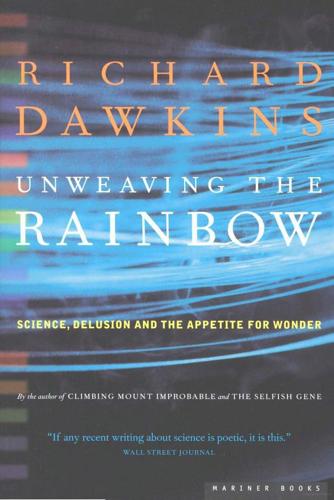
Unweaving the Rainbow
by
Richard Dawkins
Published 7 Aug 2011
The British psychologist Richard Gregory has paid special attention to visual illusions as a means of studying how the brain works. In his book Eye and Brain (fifth edition 1998), he regards seeing as an active process in which the brain sets up hypotheses about what is going on out there, then tests those hypotheses against the data coming in from the sense organs. One of the most familiar of all visual illusions is the Necker cube. This is a simple line drawing of a hollow cube, like a cube made of steel rods. The drawing is a two-dimensional pattern of ink on paper. Yet a normal human sees it as a cube. The brain has made a three-dimensional model based upon the two-dimensional pattern on the paper. This is, indeed, the kind of thing the brain does almost every time you look at a picture.
…
When we are looking at an actual wooden box, our simulation software is provided with additional information, which enables it to arrive at a clear preference for one of the two internal models. We therefore see the box in one way only, and there is no alternation. But this does not diminish the truth of the general lesson we learn from the Necker cube. Whenever we look at anything, there is a sense in which what our brain actually makes use of is a model of that thing in the brain. The model in the brain, like the virtual Parthenon of my earlier example, is constructed. But, unlike the Parthenon (and perhaps the visions we see in dreams), it is, like the surgeon's computer model of the inside of her patient, not entirely invented: it is constrained by information fed in from the outside world.

A Devil's Chaplain: Selected Writings
by
Richard Dawkins
Published 1 Jan 2004
If this is the only piece of scientific history you know, you might indeed conclude that all apparent truths are mere approximations, fated to be superseded. There is even a quite interesting sense in which all our sensory perceptions – the ‘real’ things that we ‘see with our own eyes’ – may be regarded as unfalsified ‘hypotheses’ about the world, vulnerable to change. This provides a good way to think about illusions such as the Necker Cube. The flat pattern of ink on paper is compatible with two alternative ‘hypotheses’ of solidity. So we see a solid cube which, after a few seconds, ‘flips’ to a different cube, then flips back to the first cube, and so on. Perhaps sense data only ever confirm or reject mental ‘hypotheses’ about what is out there.16 Well, that is an interesting theory; so is the philosopher’s notion that science proceeds by conjecture and refutation; and so is the analogy between the two.
…
W., (i), (ii), (iii) Medawar, Peter, (i), (ii), (iii), (iv), (v), (vi), (vii), (viii), (ix), (x), (xi) Melchett, Lord, (i) Meme, (i), (ii), (iii), (iv), (v)f, (vi) Analogy with computer virus, (i), (ii), (iii) Analogy with gene, (i) As Darwinian replicator, (i) Complex, Coadapted, see Memeplex Fidelity in transmission of, (i) Longitudinal and horizontal transmission of, (i), (ii) Natural selection of, (i) Not digital, (i) Oxford Dictionary definition of, (i) Meme Machine, The, (i), (ii) Memeplex, (i), (ii) (see also Religion) Memetics, (i), (ii), (iii) Mendel, Gregor, (i), (ii), (iii) Mendelism, (i), (ii) Middle Eastern politics, (i) Migration, Evidence in genes of, (i) Migratory mixing, (i) Miliband, David, (i) Mill, John Stuart, (i) Miller, Geoffrey, (i) Miller, Jonathan, (i) Mind As seeker after pattern, (i) Darwin’s materialistic view of, (i), (ii) Discontinuous, (i) Limitations of, (i) Meme hypothesis of, (i) Parasites, see Meme, Memeplex, Religion, Virus of the mind Symptoms of infection, (i) Miracle stories, (i) Missing link, (i), (ii) Modern Synthesis, see Neo-Darwinisn Molecular biology, see Genetics, Molecular Molecular clock, (i), (ii), (iii) Monotheism, (i) Montgomery of Alamein, Viscount, (i) Moore’s Law, (i) Mozart, Wolfgang Amadeus, (i) Multicellularity, (i) Mutations As movement through genetic space, (i) Complex effect on developmental processes, (i) Frame-shift, (i) Macromutations, (i) Neutral, (i), (ii), (iii) Provide genetic variation, (i) Random nature of, (i), (ii) Rate of, (i) Myhrvold, Nathan, (i) Mystery As better unsolved, (i) Of the Transubstantiation, (i), (ii), (iii) Of the Trinity, (i) Mysticism, (i) Narrow Roads of Gene Land, (i), (ii) Natural Selection Contributes information to gene pool, (i) Distinct from sexual selection, (i) Female preference subject to, (i) Hoyle’s misunderstanding of, (i), (ii), (iii) Influences evolution only when acting on replicators, (i) Meme-based, (i) Neutral mutations hidden from, (i) Nature/nurture cliché, (i) Necker Cube, (i) Nematode worm, see Caenorhabditis elegans Neo-Darwinism, (i), (ii), (iii), (iv), (v), (vi), (vii), (viii), (ix) Neoteny, (i) Neutral Theory, (i), (ii) New Age, (i), (ii), (iii) Newton, Isaac, (i), (ii), (iii), (iv)f, (v) Newton, Patricia, (i) Nicholls, Kate, (i) Nietzsche, Friedrich Wilhelm, (i) Northern Ireland, (i), (ii), (iii), (iv), (v) Norton-Griffiths, Michael and Annie, (i), (ii) Nucleotide sequence, (i) Oncogene, (i) Orchid, (i) Origin of Species, On the, (i), (ii), (iii), (iv), (v), (vi), (vii) Orrorin, (i) Orthogenesis, (i) Oundle School, (i) Palumbi, Stephen, (i), (ii) Parasite DNA, (i), (ii) Lineages favour decreased complexity, (i), (ii), (iii) Of the mind, (i), (ii) (see also Meme, Religion) Resistance to, (i) Software, (i) Theory of sex, (i) Parental expenditure/investment, (i), (ii) Patai, Daphne, (i) Pater, Walter, (i) Patriotism, Mindless, (i) Peacocks’ tails, (i) (see also Sexual selection) Phenotype, (i), (ii), (iii), (iv), (v), (vi) Phylogenetic tree, (i), (ii) Physics Envy, (i) Picasso, Pablo, (i) Pierce, Naomi, (i) Piezoelectric effect, (i) Piltdown hoax, (i) Pinker, Steven, (i) Pius XII, (i) Placenta, As clone of baby, (i), (ii) Planck, Max, (i) Pluto’s Republic, (i), (ii), (iii) Pope’s message on evolution, (i) Popper, Karl, (i), (ii) Postmodernism, Meaning of, (i) Postmodernism Disrobed, (i), (ii), (iii) Postmodernism Generator, (i) Preformationism, (i) Pringle, J.
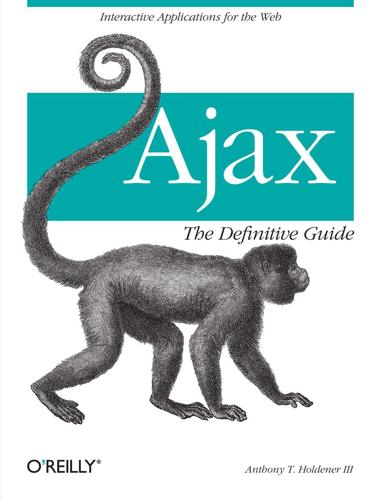
Ajax: The Definitive Guide
by
Anthony T. Holdener
Published 25 Jan 2008
This phenomenon is a visual perception characterized by unpredictable changes in how the brain spontaneously views patterns that can be considered ambiguous. Probably the most famous pattern is the Necker cube (http://www. hypnosisnetwork.com/articles/a/76/The-Necker-Cube:-An-Experiment-in-Perception)— a line drawing of a cube that does not give any visual cue as to which lines are in front of the others when they cross. The brain prefers to see patterns and images in certain ways based on experiences in life—people view objects from above and not below, light sources come from above and not below, and so on. The unpredictable changes occur the longer a pattern is viewed. As you look at the Necker cube, suddenly your brain will pick up that you could view the cube from below.
…
video on YouTube, 661 what they can do, 664 massive multiplayer online role-playing games (MMORPGs), 730 Matsumoto, Yukihiro, 43 McClanahan, Craig, 60 media types (CSS), 800 menus, 154 button and image navigation, 180–188 buttons, 180–184 image rollovers, 185–188 drop-down, 188–191 file menu, 192–212 adding Ajax, 210 JavaScript code for manipulating, 199–209 navigation, 175–212 simple navigation bar, 175–180 messages element (WSDL), 601 <meta> elements, 566 Meta Content Framework (MCF), 14 metadata GIF images, 436 XML attributes, 845 MetaWeblog interface, 620 methods considerations in web application design, 25 DOM table methods, 137 event, 132 informational DOM stylesheet methods, 126 Internet Explorer differences from DOM 2 stylesheet methods, 127 MgmtAPI, 621 Microsoft adCenter, 902 ASP/ASP.NET, 40 browser wars with Netscape, 10 Excel, 47 MapPoint, 627, 903 .NET Framework, 58 built-in documentation capability, 26 .NET Remoting to implement RPC, 596 SQL Server, 45 open source, Express Edition, 46 Virtual Earth, 628 Visual C# Developer Center, 27 Visual Studio, 59 Windows Live Search, 652 (see also IIS; Internet Explorer; Windows systems) MIME types compression based on, 814 RSS and, 16 Miner, Wilson, 61 mixed content elements, 845 MMORPGs (massive multiplayer online role-playing games), 730 MNG (animated version of PNG), 439 MochiKit library, 886–889 Ajax in (Deferred object), 886–889 Async object, 886 model (data access) module, 30 model-view-controller (see MVC design pattern) modular coding, 789–806 client side, 791–803 CSS, 795–802 JavaScript, 802 XHTML, 791–795 defined, 789 possible modularization in an Ajax application, 790 server side, 804–806 server-side components, 806 SQL, 805 using server side for structure, 804 modules basic three-tier web application, 29 DOM specifications, 13 Event, 129 modulus 10 algorithm, 543 moo.fx, 95 MooTools library, 877–880 effects, 880 form submission, 880 making an Ajax request, 879 simple server requests, 877 mouse click event handling added to character class, 749–753 mouse input (games), 766 MouseEvent module, 129 MouseEvents, image rollovers, 185 movement functionality added to character, 743–747 Mozilla browsers Gecko layout engine, 18 JavaScript error properties, 409 MSDN Internet Explorer handling of stylesheets, 129 Windows Live Search, 652 MSHTML (Trident), 18 MSN Messenger, 903 MSN Spaces, 620, 903 MUD (multiuser dungeon/dimension) games, 728 Index | 943 multidimensional databases, 47 multistable perception, 183 music and video services, 631–636 list of some popular services, 632 YouTube, 632–636 MutationEvent module, 130 MVC (model-view-controller) design pattern, 30 incorporated into RIAs, 30 Jakarta Struts framework, 60 Ruby on Rails, 59 MySQL, 46 mysql_real_escape_string( ) function, 535, 557 Mystery House (adventure game), 727 N name attribute <form> element, 490 deprecation for certain elements in XHTML, 494 document.frames[] array of elements, 322 XHTML 1.0, 321 names (XML), 846 namespaces SOAP, 598 XML, 846–848 Atom 1.0 versus RSS 2.0, 16 navigation, 175–246 general application layout and, 246 lack of, 146 lists used for, 291 menus, 175–212 button and image navigation, 180–188 drop-down menus, 188–191 file menu, 192–212 function of, 154 simple navigation bar, 175–180 other navigation aids, 221–243 accordion navigation, 236–239 Ajax and page loading, 240–243 breadcrumbs, 221–226 links at bottom of a page, 226–228 navigation boxes, 231–235 paged, 228–231 problems with Ajax navigation, 243–245 bookmarks, 244 browser back button, 245 944 | Index tabs, 212–221 CSS tabs using XHTML lists, 213–215 image tabs, 216–217 tab content, 218–221 navigation boxes, 231–235 vertical lists, using, 235 navigation windows, 347–355 placing content into, 347–349 information boxes, 348 pop-up windows, 360–362 replacing alerts, prompts, confirms, etc., 349–355 confirmation window, 349–351 larger forms, 353–355 prompt window, 351–353 tool tips, 355–360 Necker cube, 183 Nederlof, Peter, 188 .NET Framework, 41, 58 architecture, 58 assemblies, 59 .NET Remoting, 596 NETaccounts (financial accounting), 626, 904 Netscape browsers browser wars with Microsoft, 10 layout engines, 18 network databases, 48 network stack, 816 news and weather services, 636–641 list of some services, 637 NewsIsFree, 637–641 NewsCloud, 637, 904 NewsGator, 637, 904 NewsIsFree, 637, 637–641, 905 API functions for use with web service, 638 getNews( ) request, results of, 639 using SOAP and PHP to pull data from, 640 nodes appending by specifying a location, 109 appending node to list of child nodes, 108 methods used to create, 107 referencing table nodes, 136 standardized list of node types, 105 nodeType property, 113 <noframes> element, 318 Nonstandard Event module, 130 O O(n log n) sorting algorithms, 268 O(n2) sorting algorithms, 268 O’Reilly, Tim, 661 OASIS (Organization for the Advancement of Structured Information Standards), 596 object databases, 48 object literals, 825 object manipulations (animation), 467–472 object positioning (Rico), 464 obscurity, avoiding in application design, 145 one-stop shops, 149 onFailure property, 277 onreadystatechange property (XMLHttpRequest), 69, 80 onSuccess property, 277 Open Group, 596 open source services, 668 OpenAJAX Alliance, 94 openPageInDIV( ) function (example), 326 openPopUp( ) function, 340 Opera browsers Presto layout engine, 19 user changes, 363 operating systems alert windows, 335 fonts, 163–166 interoperable communication with SOAP, 597 optimization of Ajax applications, 807–839 Ajax optimization, 838 client and server communication, 838 code optimization, 839 data, 839 client-side, 818–830 JavaScript, 822–830 XHTML and CSS, 819–822 execution speed, 809 file size, 808 HTTP, 809–815 compression, 813–815 headers, 810–813 packets, 815–818 optimal sizes, 817 server side, 830–838 compression, 830–833 SQL, 833–838 Optrata mashup, 662 Oracle, 45 open source version, 10g Express Edition, 46 web site, 45 organic layout, 158 Organization for the Advancement of Structured Information Standards (OASIS), 596 organizing tools, 155 overflow: hidden (CSS rule), 442 P packets, 815–818 optimal sizes, 817 requests for JavaScript, CSS, and media files, 818 TIP/IP, 808 page indexing, 569 page layout, 329–334 dynamic nature of pages, 330 separating structure from presentation, 333–334 page loading, status bar for Ajax, 240–243 page reloads, web pages in 2000, 7 paged navigation, 228–231 Ajax solution, 230 solution using DHTML techniques, 228 pagination, table, 283–291 sorting paginated tables, 289–291 using Ajax, 287–289 using JavaScript, 285–287 palettes, 436 panels, 149 parallel lines, 763 ParseKeypress( ) function (example), 765 ParseMouseClicks( ) function (example), 766 parseResponse function, 100 parsers documentation, 27 validating parsers, 27 parseStateToQueryString( ) function, 245 parseXML( ) function, 80 parsing JSON strings, 90 path between two points approximating a straight line, 748 pause time between frame switching, 442 PC Direct Source storefront, 161 PEAR modules, 63 Index | 945 pen colors (whiteboard), 715–718 People Finders, 666 people searches, 667 perception, 3D objects in 2D space, 183 PeriodicalUpdater object, 868 PeriodicUpdater object, 101 persistent stylesheets, 372 Personal Web Server (PWS), 36 PhishTank, 905 phone number reference service, 650 phone numbers, validating, 539 photo services, 641–649 Flickr, 642–649 list of popular APIs, 641 PHP, 39, 41 adding a post programmatically to del.icio.us, 624–626 adding compression to a site, 831 base64_encode( ) function, 312 calling FeedBurner MgmtAPI’s Find Feeds method, 622 chat client structure, 679 checking on parameters, 556 code to create a table for a server response, 277 error and logging constants, 410 error handler, custom, 411 frameworks, 62 full text site search, 568 get_points.php file, sending whiteboard information to clients, 713 handling a JSON request from the client, 88 inline documentation, 27 logError script, 427 modular server-side components used to build page structure, 805 mysql_real_escape_string( ) function, 535 parsing <meta> elements on a site, 566 preparing and sending search hints back to user, 579 put_message.php file (chat application), 687 REST request to AWS, 610 script handling a RAW POST sent as XML, 526 script handling an XML data request, 74 script handling GET or POST from the client, 525 script handling RAW POST as JSON, 526 946 | Index server-side script handling dynamic bar graph request, 477 slide show application, script for Internet Explorer, 315 slide show application, script sending pictures from server, 312–314 SOAP request to AWS, 607 SoapClient( ), 637 using feeds to distrubute information, 615 using to pull data from NewsIsFree, 640 using with JSON, 87 phpDocumentor parser, 27 pictures (see images; photo services) pipe character (|), separating lists, 226 Pixagogo, 642, 905 pixels (font sizing), 386 planning phase, Ajax web application development, 24 platform games, 731 plug-ins for browsers, 733 Flash, 733 Java applets, 734 Shockwave, 734 PNG alpha-transparency, support by browser engines, 18 PNG image format, 437, 439–453 alpha transparency, 439 building animations with JavaScript looping, 442–444 more robust animation object, 444–448 PNG CSS, 441 using Ajax, 448–453 character animation, 735 differences from GIF, 440 pop-up boxes building custom, 336 CSS styling rules for alert window, 338 dragging functionality, adding, 344–347 keeping focus and closing, 339–343 pop-up windows, 360–362 file sharing application, sending a file, 692 list of features, 361 user consent for, 361 (see also navigation windows) port types element (WSDL), 601 Portable Network Graphics (see PNG image format) portlets, 668 ports element (WSDL), 601 position of an object, animating dynamically, 464–467 POST method (see GET and POST methods) postfix incrementing operators, 830 PostgreSQL, 46 preferred stylesheets, 372 font size, 389 presentation layer, separation from structure or data layer, 250 Presto, 19 standards supported, 18 print files (CSS), units of measurement, 371 processing instructions (PIs) in XML, 849 product codes (UPC Database), 653, 909 professional licenses, 667 Programmable Web, 668, 892 programming languages compiled, optimization of, 807 language for the backend, optimization and, 808 object databases, 48 selecting for mashup backend, 670 Progressive JPEG, support by browser engines, 18 project managers, prerequisites for this book, xiv prompt window, 351–353 properties CSS2 and JavaScript equivalents, 119–124 Event object, 132–133 informational DOM stylesheet properties, 126 informational properties (DOM), 114 innerHTML, 138–140 Internet Explorer alternatives to DOM 2 stylesheet, 127 JavaScript errors, 409 nodeType, 113 traversal properties (DOM), 116 protocol stack, web services, 597 Prototype Framework, 95, 863–869 $F( ) function, 496 accordion object, 238 Ajax response callbacks, 864 Ajax with Prototype, 863 automating requests, 868 dynamic page updating, 867 Element object, show( ) and hide( ) methods, 242 evaluating JSON, 866 event handling, 577 Event object, pointerX( ) and PointerY( ) methods, 704 events and event handling, 342 global responders, 867 helper functions, 98 objects used with Ajax, 99–102 passing parameters to HTTP method, 865 use by Rico library as base, 460 use in file menu example, 198 pseudoselectors, Internet Explorer and, 223 Public Record Finder, 666 public records, 666 differences in availability from states, 666 puzzle games, 730 PWS (Personal Web Server), 36 Pythagorean theorem, 759 Python, 39, 42 frameworks, 61 Q query string, passing page number in, 228, 230 Quest for Glory game series, 727 quick sorts, 268 quote_smart( ) function, 687 R Rademacher, Paul, 660 radio buttons custom, 499 properties, 499 form controls, 493 setting error indicator to, 553 Rails (see Ruby on Rails) RangeError object, 409 RAW POST method, 525 PHP script handling as XML, 526 script handling as JSON, 526 RDF Site Summary (RSS 0.9 and 1.0), 16 reading style for web content, 147 readyState property (xmlDoc), 80 readyState property (XMLHttpRequest), 69 using in status bar, 242 real estate company, mashup for, 671 RealEDA Reverse Phone Lookup, 650, 905 Really Simple Syndication (RSS 2.0), 16 (see also RSS) Index | 947 real-time communication (see communication needs for business) real-time strategy games, 724 receptivity to user feedback, 142 rectangular collision detection, 754–759 reference services, 650 ReferenceError object, 409 regular expressions, 538 checking for valid email addreses, 540 Dojo validation objects, 551 phone number checks, 539 Rehabilitation Act, Section 508, 33 relational databases, 48–54 creating tables, 48–51 deleting records from a table, 53 getting records from the database, 52 implementation of dimensional databases, 47 inserting records into tables, 51 performance improvement with stored procedures, 54 updating records, 53 relative font sizes, 386 release (software development), 23 reloading web pages, classic web sites, 7 Remote Procedure Call (RPC), 595 removeChild( ) method, 110 removeEventListener( ) method, 131 repositioning objects and storing the positions, 403–407 dragging objects, 403 storing information in a database, 404 Representational State Transfer (see REST) Request Entity Too Large error, 421 requirements analysis, 23 Ajax web application development, 24 residential information in the U.S. and Puerto Rico, 651 Resig, John, 96 resolution testing, 26 Responders object, 867 <response> elements code attribute, 612 response headers (HTTP), 810 response to search query, 590 responseText property (XMLHttpRequest), 69 responseXML property (XMLHTTPRequest), 76 948 | Index responseXML property (XMLHttpRequest), 69, 78 REST (Representational State Transfer), 604 eBay API, 653 requesting search results, 654 example request to Flickr web service, 648 Flickr request and response, 642 request to AWS, 609 triangle of nouns, verbs, and content types, 605 RESTful design, 605 Result objects (Google AJAX Search API), 587 CSS classes for each object, 592 Results objects (Google AJAX Search API) CSS styling structures, listed, 592 reusability (web applications), 142 Rhapsody, 632, 906 RIAs (Rich Internet Applications), 30 Rich Site Summary (RSS 0.91 and 1.0), 16 Rico, 97 Rico library animating an element on the page, 466 dragging and dropping capabilities, 460 object positioning through Effect object, 464 reference, 875 role-playing games (RPGs), 728–730 massive multiplayer online RPGs (MMORPGs), 730 root element or root node, 104 rows collection, 136 RPC (Remote Procedure Call), 595 RSS, 614 differences between Atom 1.0 and RSS 2.0, 16 feed results of getNews( ) request on NewsIsFree, 639 feed used to create REST web service, 615 feed validation, 616 GeoRSS feed, 630 standards and versions, 15 support by browser engines, 18 version 2.0, 15 Ruby, 39, 43 Ruby on Rails (RoR or Rails), 59 rule of thirds, 163 rules collection (Internet Explorer), 128 S Safari browsers, WebCore layout engine, 18 sans-serif fonts, 162 Sarissa library, 97, 884–885 Ajax requests, 884 parsing data from the server, 885 web site, 83 XML, 885 XSLT transformation with, 84–86 scraping data for web feeds, 613 screen descriptor (GIF), 435 screen files (CSS), units of measurement, 371 screen.css file, 369 <script> elements needed to use Rico, 466 script.aculo.us, 95, 869–875 auto-completion, 869–872 components, 802 Draggable object, 344–345, 403 dragging and dropping functionality, 455–457 Effect object, 238 effects, 467, 875 online demonstration, 468 inline editing, 873–875 organic site layout, 159 sortable list, integrating Ajax, 303 sorting lists via drag-and-drop solution, 298 scripting languages, 39 server scripting errors, 410 used for ASP, 40 search engines, 154, 565 problems with sites using Ajax, 921 use of databases, 570 using on a local site, 570–575 searches, 565–593 dynamic searching with Ajax, 577–581 giving hints to the user, 577–580 submitting a search from hints, 580 Googling a site, 581–593 search services, 651 types of site searches, 565–576 advanced searching, 576 full text parsing, 568 keyword searches, 566 page indexing, 569 using public search engines on local sites, 570–575 web application search tools, 151 Section 508 of the Rehabilitation Act, 33 security, risks associated with use of Ajax, 919–921 SeeqPod (music service), 632, 906 <select> elements, placement of labels, 485 SELECT statements (SQL), 52 selectNodes( ) method, 83 selectSingleNode( ) method, 83 serialize( ) method, 86 serif fonts, 162 server responses, 531–533 example of client handling complex response, 532 reporting success or failure, 531 Server Side Include (SSI), 38 server side of Ajax applications, 804–806 breaking into components and modularizing, 806 modularizing SQL, 805 optimizations, 830–838 compression, 830–833 SQL, 833–838 using for structure, 804 server-side errors, 410–413 database, 412 external errors, 413 notifying the user, 419 server scripting errors, 410–412 server-side scripting, 28, 39–44 ASP/ASP.NET, 40 handling dynamic bar graph request (fa_stats.php), 477 Java, 43 logging errors, 427 PHP, 41 Python, 42 Ruby, 43 to web services, 607–610 Service Description level (web services), 597 Service Discovery level (web services), 597 Service Messaging level (web services), 597 Service Transport level (web services), 597 Service-Oriented Architecture (SOA), 596 services element (WSDL), 601 servlets (Java), 38, 44 setAttributeNode( ) method, 107 setDragTarget( ) method, 458 setSiteRestriction( ) method (GwebSearch), 586 shapes, drawing for whiteboard, 719 Index | 949 Shea, Dave, 332 shell sorts, 268 Ship, Howard M.

The Evolution of Everything: How New Ideas Emerge
by
Matt Ridley
Yet Crick’s ambitious aim, as one of the two people who had stumbled upon the secret of life when he and James Watson found the self-copying code of DNA, was to find the seat of consciousness. He wanted to pin down the very structures in the brain that manifested the phenomenon of conscious, as opposed to unconscious, perception. For example, when you see an optical illusion of the kind that flips between one perception and another, such as a Necker cube, there must be some neural change as the flip happens. Where does that neural change occur? Crick never found the answer. On his deathbed in 2004 he was correcting a paper on a structure called the claustrum, which is an especially well-connected sliver of brain tissue that’s hard to experiment on, because it’s so essential.
…
239 Morris, William 248 Moses 263, 264 Mosley, Oswald 251 Mountain Meadow massacre (1857)89 Mozart, Wolfgang Amadeus 85 Muir, Thomas 244 Mumbai 92 Murphy, Archibald 176 Muslims 52, 89, 263 Mussolini, Benito 251, 252 Myrdal, Gunman 230 Nakamoto, Dorian Satoshi 309 Napoleon Bonaparte 101, 175, 216, 280 Napoleon III 247 Nation 250 National Health Service (NHS) 116 National Institute of Child Health and Human Development 161 National Mortgage Corporation 287 Natural Theology 25 Nazis 175, 196, 198, 201, 202–3, 253,318 Neanderthals 82, 83 Necker cube 145 ‘Negro Project’ (1939) 201 Nelson, Richard 137, 138 neo-Malthusians 209 Neptune 120–1 New Deal 251, 290 New Delhi 185 New Guinea 80, 81 New Jersey 121 New Statesman 315 New York 92, 121, 167, 176 New York Times 291 New Zealand 32, 177 Newcastle University 181 Newcastle upon Tyne 91, 119 Newcomen, Thomas 1–2 Newton, Isaac 13, 14, 17, 20, 21, 23, 41, 51, 120, 215; Opticks 13 Niccolò Niccoli 12 Nietzsche, Friedrich 8 Nigeria 181 Nobel Prize 122, 230, 273 Nock, Albert Jay 240 Norberg, Johan 284 North Korea 32, 101, 102, 114 North of Scotland Bank 281 Norway 32, 247 Not in Our Genes (Lewontin, Rose & Kamin) 157 The Not So Wild, Wild West (Anderson & Hill) 236 NotHaus, Bernard von 309 Noyce, Robert 223 Nuremberg laws 198 Obama, Barack 219–20, 300 Odyssey 87 OECD (Organization for Economic Cooperation and Development) 139 Of Pandas and People (Kenyon et al.) 50 Office of Population 206 Ogburn, William 127–8 O’Grady, Selina, Man Created God 256, 257 Ohno, Susumu 69–70, 71 Oktar, Adnan (Harun Yahya) 52 Opium Wars 233, 245 Oppenheimer, Robert 119 Orgel, Leslie 67 Orszag, Jonathan 292 Orszag, Peter 292 Orwell, George 300 Osborn, Frederick 204 Osborn, Henry Fairfield 200, 204, 205; Our Plundered Planet 203–4 Otteson, James 23, 24, 26, 27 Overton, Richard 242 Paddock, William, Famine 1975!
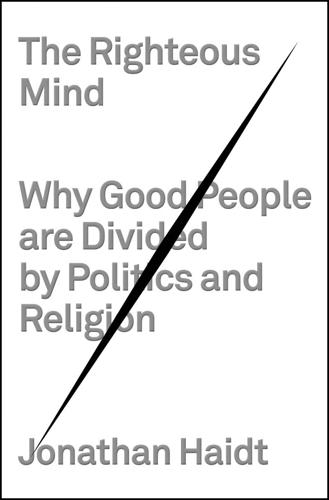
The Righteous Mind: Why Good People Are Divided by Politics and Religion
by
Jonathan Haidt
Published 13 Mar 2012
Sometimes we have conflicting intuitions about something, as many people do about abortion and other controversial issues. Depending on which victim, which argument, or which friend you are thinking about at a given moment, your judgment may flip back and forth as if you were looking at a Necker cube (figure 3.1). FIGURE 3.1. A Necker cube, which your visual system can read in two conflicting ways, although not at the same time. Similarly, some moral dilemmas can be read by your righteous mind in two conflicting ways, but it’s hard to feel both intuitions at the same time. And finally, it is possible for people simply to reason their way to a moral conclusion that contradicts their initial intuitive judgment, although I believe this process is rare.
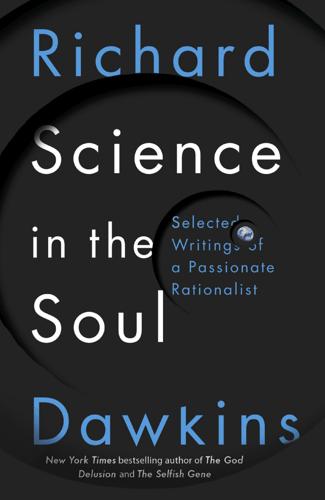
Science in the Soul: Selected Writings of a Passionate Rationalist
by
Richard Dawkins
Published 15 Mar 2017
Each one of us knows we possess it even if, as many modern thinkers aver, it is an illusion – an illusion constructed, as Darwinians might speculate, because a coherent agency of singular purpose helps us to survive. Visual illusions such as the Necker Cube— —or the Penrose Impossible Triangle— —or the Hollow Mask illusion demonstrate that the ‘reality’ we see consists of constrained models constructed in the brain. The Necker Cube’s two-dimensional pattern of lines on paper is compatible with two alternative constructions of a three-dimensional cube, and the brain adopts the two models in turn: the alternation is palpable and its frequency can even be measured.
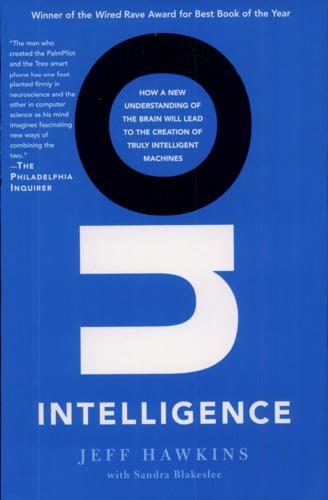
On Intelligence
by
Jeff Hawkins
and
Sandra Blakeslee
Published 1 Jan 2004
If the match fits the local region, predictions are passed down the cortical hierarchy in quick succession to all lower regions. If this is a correct interpretation of the stimulus, then each region of the hierarchy will settle on a correct prediction in rapid succession. The same effect should occur while viewing an image with two interpretations, such as a silhouette of a vase that can look like two faces or a Necker cube (an image of a cube that alternately appears in two different orientations). Every time the percept of such an image changes we should see a propagation of new predictions flow down the hierarchy. At the lowest levels, say V1, a column representing a line segment of the image should stay active in either perception of the image (assuming the eyes haven't moved).

The Master and His Emissary: The Divided Brain and the Making of the Western World
by
Iain McGilchrist
Published 8 Oct 2012
Thomas) Fig. 2.4 Emergence of the Gestalt Fig. 2.5 Split-brain subjects and sense of the whole (Gazzaniga & Le Doux, 1978) Fig. 2.6 Right hemisphere damage and loss of the sense of the whole (Hécaen & Ajuriaguerra, 1952) Fig. 2.7 Hemisphere differences and the whole (Nikolaenko, 2001) Fig. 2.8 Hemisphere differences and abstraction (Nikolaenko, 1997) Fig. 2.9 Hemisphere differences and visual depth (Nikolaenko, 1997) Fig. 2.10 Hemisphere differences: what we see v. what we know (Nikolaenko, 1997) Fig. 2.11 Cube drawing before and after commissurotomy (Gazzaniga & Le Doux, 1978) Fig. 2.12 Duck-rabbit (Popular Science Monthly, 1899) Fig. 2.13 Necker cube Fig. 4.1 Drawing Hands, by M. C. Escher Fig. 4.2 Pyramid of values according to Scheler Fig. 4.3 Creation of Man, by Michelangelo, fresco, 1511–12 (Vatican Museums and Galleries/Bridgeman Art Library) Fig. 9.1 Bishop blessing annual fair, from mediaeval pontifical vellum (Bibliothèque Nationale, Paris, Lat 962 f.264/Bridgeman Art Library) Fig. 9.2 Ideal City, by Luciano Laurana, oil on panel, after 1470 (Galleria Nazionale delle Marche, Urbino/Bridgeman Art Library) Fig. 9.3 Sermon in the Hall of the Reformed Community of Stein near Nuremberg, attrib.
…
The right hemisphere is able to maintain ambiguous mental representations in the face of a tendency to premature over-interpretation by the left hemisphere.445 The right hemisphere’s tolerance of uncertainty is implied everywhere in its subtle ability to use metaphor, irony and humour, all of which depend on not prematurely resolving ambiguities. So, of course, does poetry, which relies on right-hemisphere language capacities. During ambiguous stimulation of perceptual rivalry (the phenomenon of an ambiguous figure that can be seen in one way or another, but not both simultaneously, such as the duck–rabbit above or the Necker cube opposite446) right frontal cortex is more active.447 Fig. 2.13 Is this a cube seen from above right, or from below left? Blurred or indistinct images are not a problem for the right hemisphere, but are for the left, even where the nature of the task would suggest that it should be more problematic for the right hemisphere.448 One of the most consistent early findings in hemisphere specialisation was that whenever an image is either only fleetingly presented, or presented in a degraded form, so that only partial information is available, a right-hemisphere superiority emerges – even when the material is verbal.449 In some subtle experimental work Justine Sergent was able to demonstrate this and its converse, namely that when images are presented for longer than usual, thus increasing their certainty and familiarity, a left-hemisphere superiority emerges, even when it comes to face recognition.
…
Schacter, Curran, Galluccio et al., 1996; Curran, Schacter, Norman et al., 1997. 439. Panksepp, 2003, p. 10. 440. Gazzaniga, 1998. 441. Gardner, Brownell, Wapner et al., 1983. 442. Wolford, Miller & Gazzaniga, 2000. 443. Unturbe & Corominas, 2007. 444. Yellott, 1969. 445. Goel, Tierney, Sheesley et al., 2007. 446. The Necker cube is attributed to a Swiss crystallographer, Louis Albert Necker, who in 1832 described the way in which the structure of crystals appeared to reverse spontaneously. Although the duck–rabbit was made famous by Wittgenstein, it was first discussed by the American psychologist, Joseph Jastrow (‘The mind’s eye’, Popular Science Monthly, 1899, 54, pp. 299–312), who in turn derived it from a German popular magazine called Fliegende Blätter (1892).

Physics in Mind: A Quantum View of the Brain
by
Werner Loewenstein
Published 29 Jan 2013
Milky Way, 15, 19 Miller, George, 219 Molecular demons, 26–28, 32 emergence of, 33 for fast information transmission, 36–41 See also specific type of molecular demon Molecular information, from quantum information into, 81–86 Molecular quantum information processing, and quantum computing, 249–263, 265–266, 267–269, 270, 274 Molecular sensing and the line from nose to cortex, 87–89 and mapping, coding, and synonymity, 90–92 numerous odor-information channels in, 89–90 and quantum synonymity, 97–98 and sensory synonymity, 92–95, 95–96, 98 Molecules and molecular systems, formation of, 18 (fig.), 236 See also Atomic nuclei; Atoms Monod, Jaques, 236 Monroe, Christopher, 253 Mountcastle, Vernon, 28 Multicelled organisms, formation of, 18 (fig.), 121, 127 Muons, 79, 100, 255 Mutations, 109–113, 115, 119 (fig.), 120 Neanderthals, 150n Necker cube, 231 Necker, Louis, 231n Negative entropy, 84–85, 134 Neumann, John von, 241 Neuron clusters (glomeruli), 88 (fig.), 89, 90 (fig.), 184 Neuron development, 133–134 Neuron network coding, 228–229 Neuron trellis, 133–134, 135, 142, 149, 150, 159, 224 Neuron web, 36, 142, 158, 167–168, 172, 190, 202, 207, 222, 224, 270, 272 Neuronal computing, 145–148, 185 See also Information processing Neuronal quantum computing, 270, 271–273 Neuronal virtual-reality generator, 142–143 Neurons evolutionary debut of, 131 and gestalt recognition, 196–197, 200 increasingly loaded with meaning, 195–196, 204, 205 logic-switch rate of, 185, 186, 229 Neutrinos, 16, 79–80, 99, 100, 157, 245, 255 Neutrons, 17, 80n, 262 Newton, Isaac, 2, 4, 9–10, 12–13, 67, 156, 160, 161, 207, 208 Nicholls, John, 281 Nitrogen, 94 (fig.), 95, 129, 153n Noise, 66, 81, 82, 83, 274 NOT gate, 257, 258, 260, 261 NOT operation, 61, 257 Nuclear-magnetic-resonance spectroscopy, 254, 255, 259, 260, 262, 263, 265, 266, 274 Nuclear resonance frequency, 255 Nucleus, atomic.

Halting State
by
Charles Stross
Published 9 Jul 2011
There’s a crash and a cloud of dust and icy gravel showers down from the roof, almost blocking the doorway, and your stamina read-out begins to flash: At 20 per cent you’re in big trouble, medevac territory in a guild scenario, but there are no healers around right now. Never mind… You put the anti-tank rifle down and turn around. The ghastly altar is still there. It’s made of pale granite, and it seems to throb slightly as you look at it, as if it’s on the verge of turning inside out like a Necker cube: The hieroglyphs are as alien and incomprehensible as ever, but somehow horrible, bringing to mind echoes of alien anatomy, organs ripped from the abdominal cavities of human sacrifices, and other, hidden things. “Great,” you mutter. “Attention, object able charlie sixteen. This is your creator speaking.
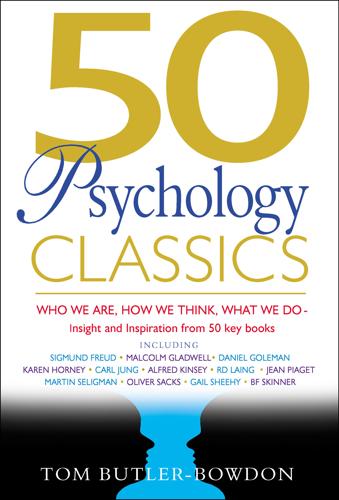
50 Psychology Classics
by
Tom Butler-Bowdon
Published 14 Oct 2007
– * * * In a nutshell Due to way the brain works, our predictions of how we will feel in the future are not always accurate, and that includes what will make us happy. In a similar vein Barry Schwartz The Paradox of Choice (p 248) Martin Seligman Authentic Happiness (p 254) * * * CHAPTER 21 Daniel Gilbert As a boy, Daniel Gilbert loved poring over a book of optical illusions, such as the Necker cube and the famous vase/faces picture (as on the cover of this book). What amazed him was how easy it was for the eyes and the brain to be fooled. When, many years later, he became a psychologist, he was interested in the regular mistakes and exercises of “filling in” that our brain makes in order to provide us with a quick picture of reality.

The Upstarts: How Uber, Airbnb, and the Killer Companies of the New Silicon Valley Are Changing the World
by
Brad Stone
Published 30 Jan 2017
Like many high-tech entrepreneurs, Camp was peculiar. McCloskey noticed that he did not particularly care about the superficialities that absorbed other people. For example, he got his hair cut only sporadically, letting it grow down to his shoulders before having it cut short. He also liked to design his own T-shirts featuring symbols such as a Necker cube, a line drawing that can be perceived in different ways. Then he would wear them out to dinner at nice restaurants. “I have no idea where he got those things,” McCloskey says. “I was not thrilled by them.” He didn’t like to carry cash and would come home and absentmindedly stuff an unwieldy wad of bills into his dresser, then leave it there.

Flow: The Psychology of Optimal Experience
by
Mihaly Csikszentmihalyi
Published 1 Jul 2008
Such people might be less prone to suffer from attentional disorders, and they may experience flow more easily. Dr. Jean Hamilton’s research with visual perception and cortical activation patterns lends support to such a claim. One set of her evidence is based on a test in which subjects had to look at an ambiguous figure (a Necker cube, or an Escher-type illustration that at one point seems to be coming out of the plane of the paper toward the viewer and the next moment seems to recede behind the plane), and then perceptually “reverse” it—that is, see the figure that juts out of the surface as if it were sinking back, and vice versa.
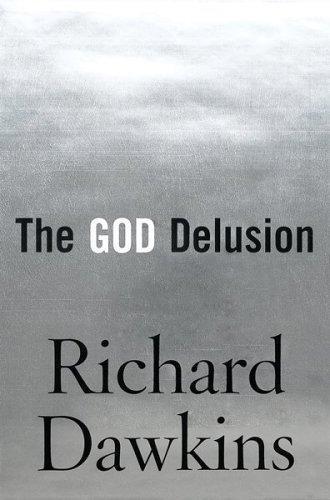
The God Delusion
by
Richard Dawkins
Published 12 Sep 2006
Our eyes don’t present to our brains a faithful photograph of what is out there, or an accurate movie of what is going on through time. Our brains construct a continuously updated model: updated by coded pulses chattering along the optic nerve, but constructed nevertheless. Optical illusions are vivid reminders of this.47 A major class of illusions, of which the Necker Cube is an example, arise because the sense data that the brain receives are compatible with two alternative models of reality. The brain, having no basis for choosing between them, alternates, and we experience a series of flips from one internal model to the other. The picture we are looking at appears, almost literally, to flip over and become something else.
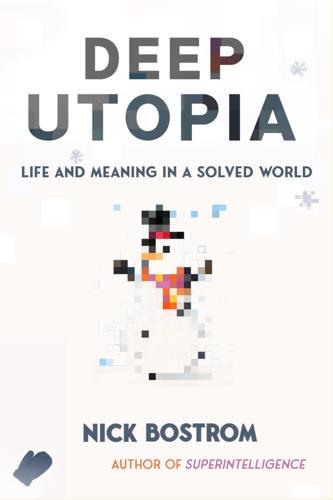
Deep Utopia: Life and Meaning in a Solved World
by
Nick Bostrom
Published 26 Mar 2024
Two distinct stimuli will often produce the same experience, as many details of the incoming activation pattern are discarded at higher levels of processing. On the other hand, a single visual stimulus is capable of triggering more than one visual experience, since the brain can interpret it phenomenally in multiple different ways. For example, the same visual stimulus of a Necker cube can produce at least two distinct visual experiences depending on how the input is mentally projected into 3D space. It seems safe to say, however, that the number of possible visual experiences is very large. It would only take a few hundred elements or features that can independently vary and be co-present in a visual experience for this to be the case, and for it therefore to be impossible for even a mature civilization to generate all possible human visual experiences by enumeration.

Rationality: From AI to Zombies
by
Eliezer Yudkowsky
Published 11 Mar 2015
It just doesn’t seem scientific. If you got as far as Recovering_irrationalist—so that many-worlds now seems perfectly logical, obvious and normal—and you also started out as a Traditional Rationalist, then you should be able to switch back and forth between the Scientific view and the Bayesian view, like a Necker Cube. So now put on your Science Goggles—you’ve still got them around somewhere, right? Forget everything you know about Kolmogorov complexity, Solomonoff induction or Minimum Message Lengths. That’s not part of the traditional training. You just eyeball something to see how “simple” it looks. The word “testable” doesn’t conjure up a mental image of Bayes’s Theorem governing probability flows; it conjures up a mental image of being in a lab, performing an experiment, and having the celebration (or public recantation) afterward.